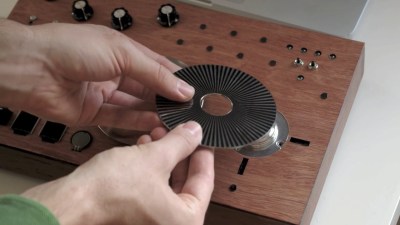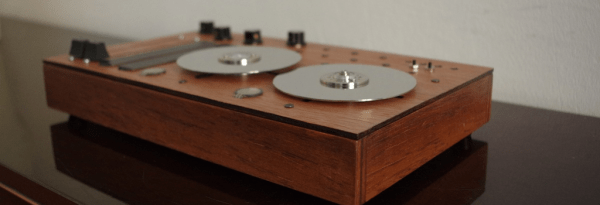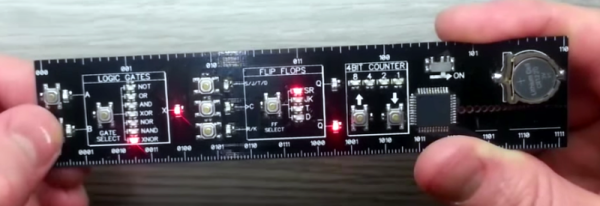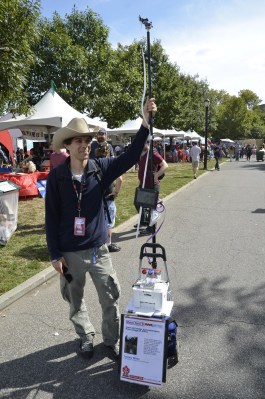It used to be that you had to spend real money to get an alternative controller for your electronic musical arsenal. These days, with cheap microcontrollers and easily-accessible free software libraries, you can do something awesome for pocket change. But that doesn’t mean that you can’t make a sexy, functional piece of art along the way! [Jan Godde] did just that with his cleverly named Wooden Sensor Box With Two Rotary Disks. (If you’ve got a better name for this thing, toss it in the comments.)
 From what we can see, the box has two potentiometer sliders, two touch-sensitive potentiometers, two force sensitive resistors, a slew of knobs, and a whole bunch of (capacitive?) touch points. In short, a ton of continuous controllers of all sizes and shapes in an aesthetic case. But stealing the show, and giving the device its name, are two platters from old hard drives that serve as jog wheels.
From what we can see, the box has two potentiometer sliders, two touch-sensitive potentiometers, two force sensitive resistors, a slew of knobs, and a whole bunch of (capacitive?) touch points. In short, a ton of continuous controllers of all sizes and shapes in an aesthetic case. But stealing the show, and giving the device its name, are two platters from old hard drives that serve as jog wheels.
As shown in the video below the break, the two jog wheels are covered with alternating stripes on the underside. Each platter has a dedicated pair of IR LEDs and photodetectors underneath serving as a quadrature encoder that allows [Jan] to tell which direction the platters are rotating, and how far.






 nside the gates, we ran into [Tommy Mintz] who was showing off his
nside the gates, we ran into [Tommy Mintz] who was showing off his 

 When he bought the table, he found that the electronics had been fried: many of the discrete components on the board had been burnt out. So, rather than replace the individual parts, he gutted the table and replaced the logic board with an Arduino Mega that drives the flippers, display and chimes that make pinball the delightful experience it is. Fortunately,
When he bought the table, he found that the electronics had been fried: many of the discrete components on the board had been burnt out. So, rather than replace the individual parts, he gutted the table and replaced the logic board with an Arduino Mega that drives the flippers, display and chimes that make pinball the delightful experience it is. Fortunately, 









